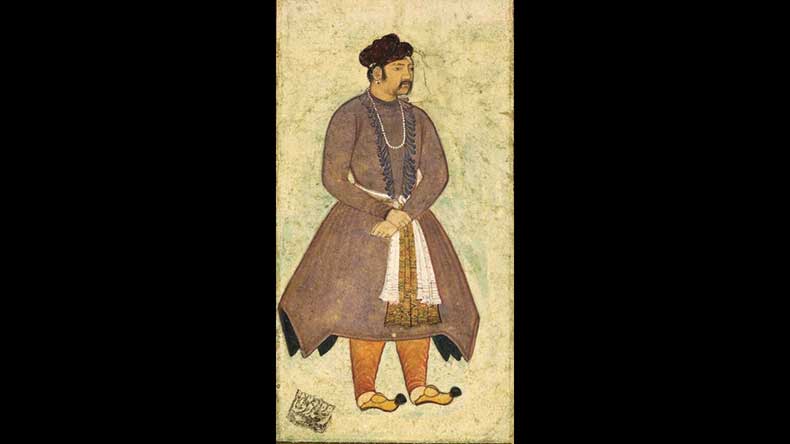Mulla Abdul Qadir Badauni has offered an important counter-critique of Mughal imperial ideology under Jalal-ud-Din Muhammad Akbar (ruled 1556-1605). Badauni’s voluminous unofficial history of the reign of Akbar, Muntakhab-ut-Tawarikh, had to be kept in hiding till both the author and the emperor had passed away. When it was eventually released, Akbar’s son and successor Nur-ud-Din Jahangir (ruled 1605-27) persecuted the author’s sons for writing what their father did about the late emperor. Indeed, Badauni wrote from his own conservative standpoint about many things Akbar did, affecting traditional understanding of the cause of Islam. The author not only sharply criticised the emperor for deviating from the norm with regard to the place of Islam in a Muslim regime, but also often provided information of the kind that would be censored in official history put together by Abu’l Fazl in his monumental, Akbar-nama and Ain-i-Akbari. Like most accomplished modern politicians or medieval rulers, Akbar could also conveniently use religion to justify his actions, whether public or personal.
Badauni has written that early in his career Akbar wanted to connect himself by marriage with the nobles of Delhi. Accordingly, messengers were sent into the harems for selecting daughters of the nobles. The news becoming public, some fun-women also wanted to join the party and the emperor himself went berserk. In one of the gatherings, he happened to see the daughter-in-law of a leading Sufi. This woman, according to Badauni, was wonderfully beautiful and altogether a charming wife without a peer, living with her husband. Enchanted, the emperor sent to the Sufi a proposal of union, and held out hopes to the husband. Badauni goes on to write that it was the law of the Mughal emperors that if the monarch cast his eyes with desire on any woman, the husband was bound to divorce her. The poor husband had no option but to tie a triple-talaq inscribed slip in the corner of the skirt of his wife and flee overnight to the city of Bidar in the kingdom of Deccan, and so was lost sight of. That virtuous lady entered the imperial harem.
Years later, at the height of his power, Akbar had set up what was referred to as ibadat-khana, literally, house of worship, where men of religion were pitted against one another and often exposed for their dubious assumptions and questionable credentials, including lack of sincere commitment to what they themselves professed. According to Badauni, one of the first topics discussed in the ibadat-khana was related to polygamy, involving Akbar himself. Badauni writes that the emperor’s questioning of the integrity of his officials entrusted with religious matters was posed in intellectual or theological terms. He writes of a question that the king asked, which would go on to alter the power relations between the state and the ulama, Sunni Muslim scholars—the self-appointed custodians of Islam. Akbar had asked: how many freeborn women may a man legally marry by nikah?
When the jurists answered that four women was the limit fixed by Prophet Muhammad, the emperor remarked that in his youth, he had not considered the question and had married as many women as it pleased him, both free-born and slaves. He now wanted to know what remedy sharia law had provided in his case. He was upset that the leading theologian of his court, Abdun Nabi, whom he had once consulted, had told him that as many as nine wives were allowed for Muslims. To this, some of the jurists replied that some mujtahids or interpreters of law had even said that eighteen were allowed, the result of a literal translation of the relevant verse of the Quran: Marry whatever women you like, two and two, and three and three, and four and four (2+2+3+3+4+4=18. The mujtahid who counted nine, interpreted it as 2+3+4=9. The usual interpretation is “two or three or four”.).
When Akbar confronted Abdun Nabi with this argument, the latter replied that he had merely wanted to point out that a difference existed among the jurists and that he had not given any fatwa to legalise illegal marriage proceedings—an answer that seriously annoyed the emperor, for he was misled on a theological point of considerable importance. From Badauni’s discussion of the problem, it becomes clear that Akbar’s officials were either utterly ignorant of standard juristical positions or were just being wicked. In the current controversy over the validity of triple-talaq, the custodians of Islam are once again coming up with misleading and untenable interpretation of Quranic verses and prophetic advice, defending something which is not only completely irrational, but also has no basis in the primary sources of Muslim jurisprudence. Political and patriarchal abuse of Islam has a long history, unfortunately.

